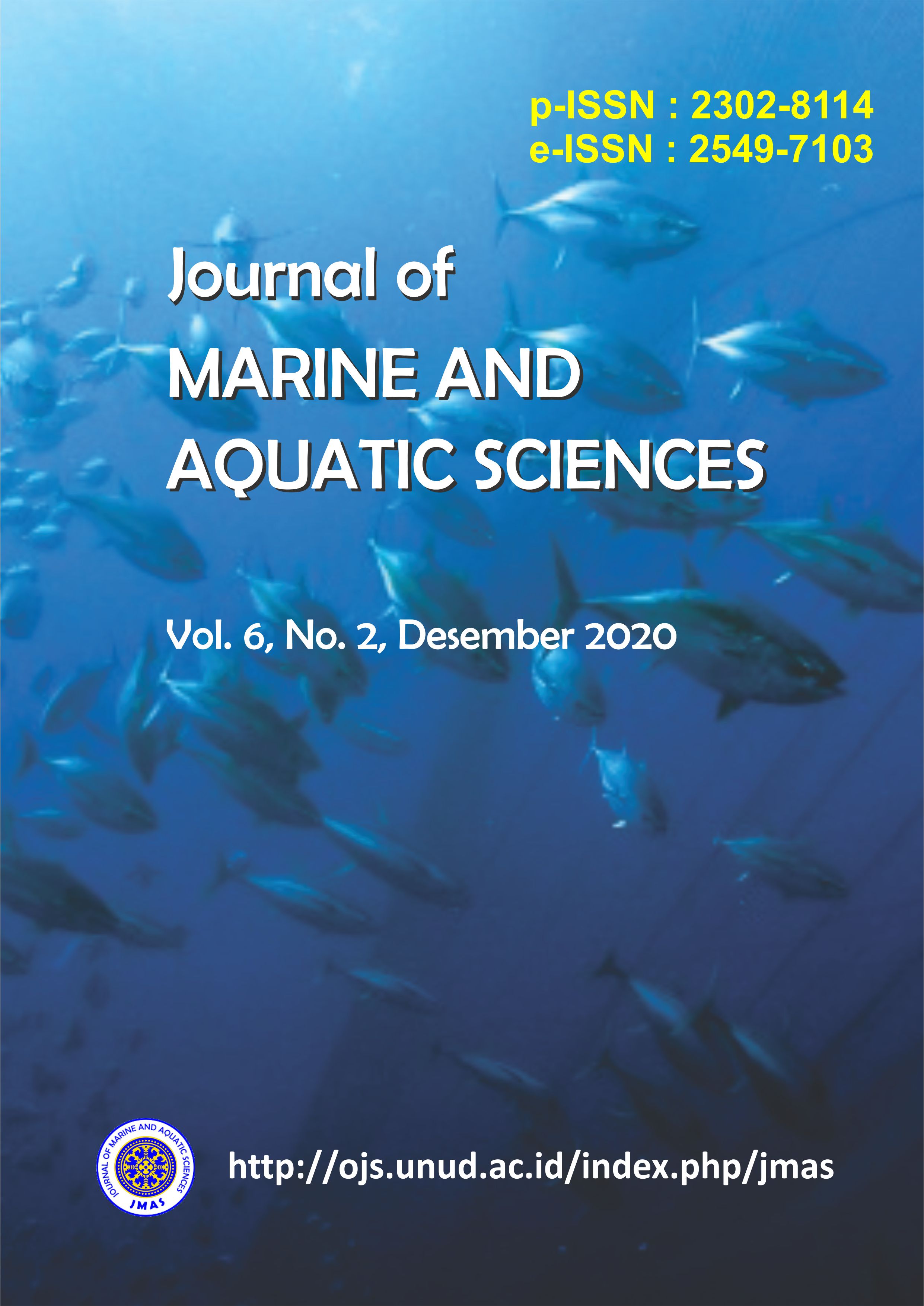Identifikasi Bakteri yang Berpotensi Mendegradasi Hidrokarbon dari Substrat Mangrove dengan Tekstur Berpasir, Berlumpur, dan Tanah Liat
Abstract
Hydrocarbon compounds are commonly found in petroleum and gas, plastics, paraffins, and bitumen. Although hydrocarbons are the constituent compounds of the materials used by humans, some hydrocarbon compounds have adverse effects on the environment and humans. One alternative to solve this problem is by using Mangrove substrate in Ngurah Rai Forest Park, Bali which is the habitat of several species of bacteria that interfere with degrading hydrocarbons. This study aims to identify the bacteria that interfere with hydroxon, through macroscopic observation, microscopic and biochemical tests. The results of this study showed six isolate bacteria that interfere with degrading hydrocarbon compounds. Six isolates were from the genus Alcaligenes of sandy mangroves, Pseudomonas and Bacillus genus from muddy mangrove soils, and two genera of bacteria from clay substrate namely Alcaligenes and Bacillus. The disturbing bacterial proposals underlying the highest hydrocarbon were found on clay with a value of 58.51% and the lowest on sandy substrates, with a discount value of 0%. The highest value on the clay substrate can cause the clay substrate to bind hydrocarbons, air, nutrients, and oxygen higher than sandy and muddy soils. The lowest value on sandy substrate can lead to low bacterial capability and it takes a long time for bacteria to degrade hydrocarbons.
Downloads

This work is licensed under a Creative Commons Attribution 3.0 International License.
Copyright 2012 - 2023 Journal of Marine and Aquatic Sciences (JMAS)
Published by Fakultas Kelautan dan Perikanan Universitas Udayana, Denpasar, Bali, Indonesia
JMAS (p-ISSN 2302-8114; e-ISSN 2549-7103)


